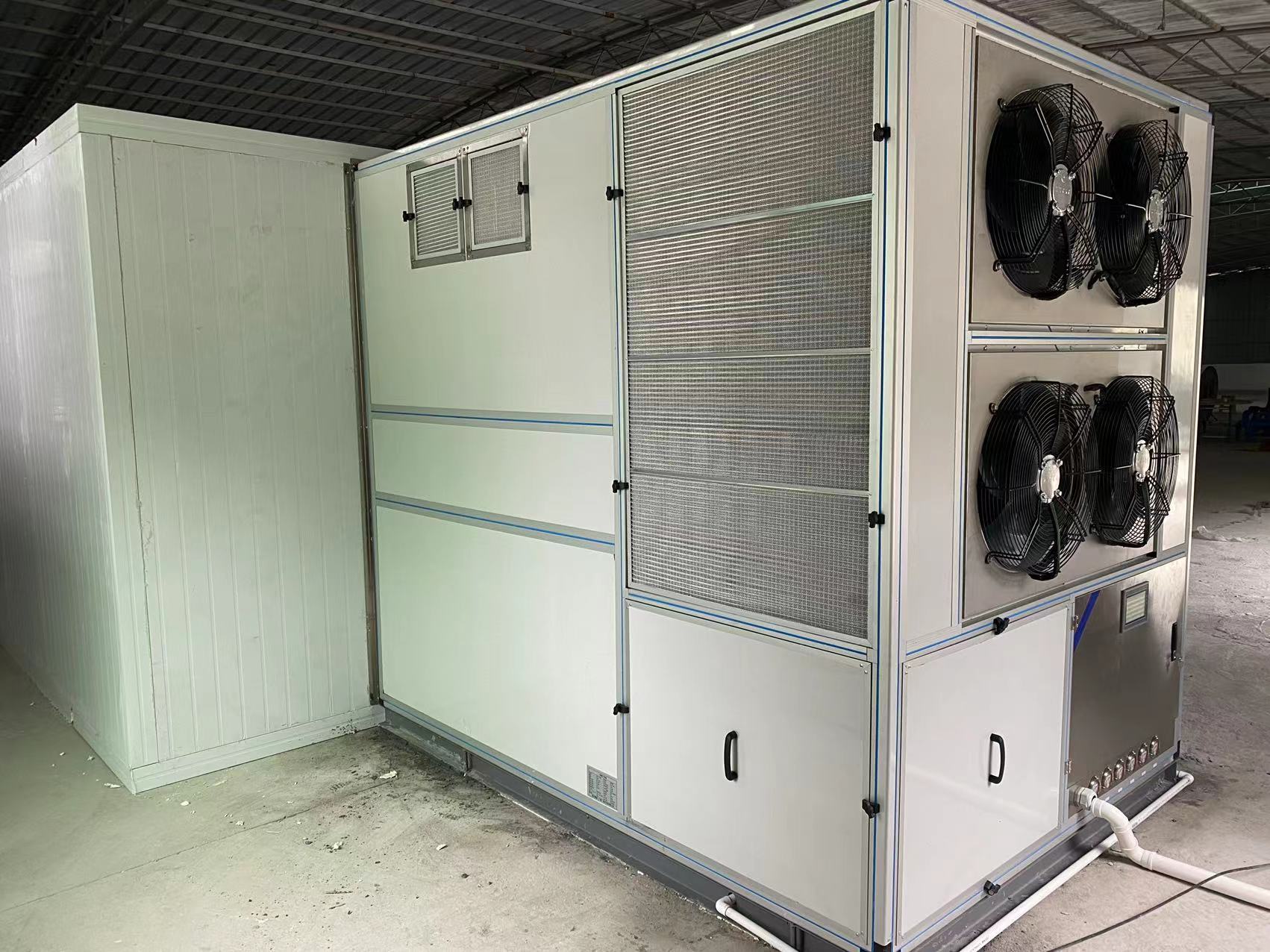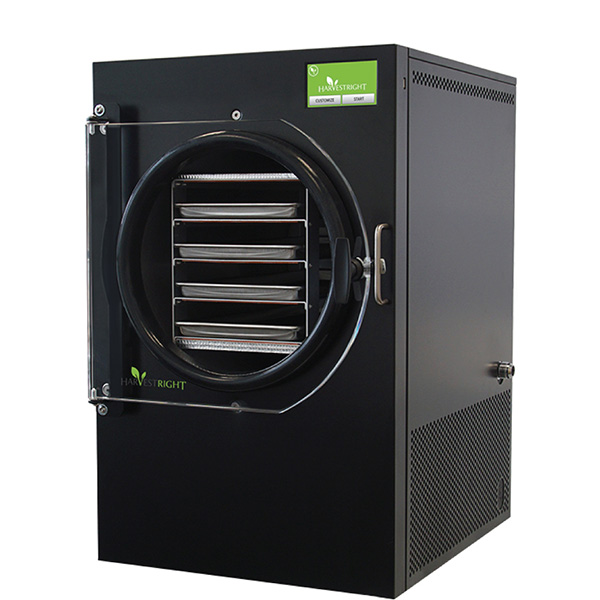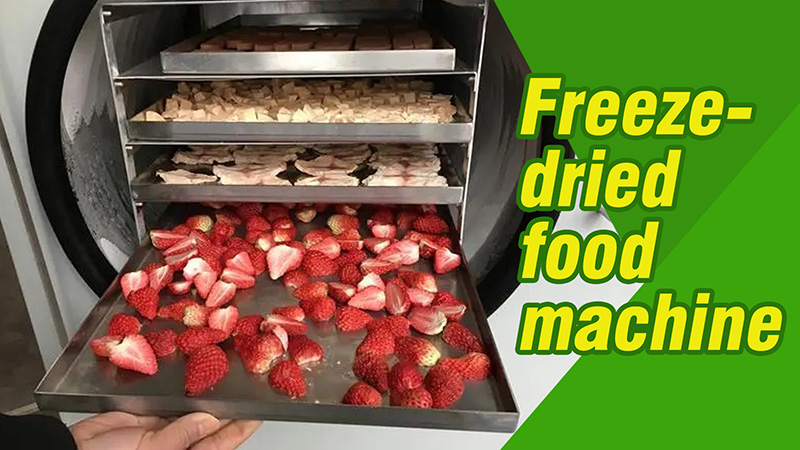
Content Menu
● Introduction to Freeze Drying Technology
● Understanding the Freeze Drying Process
● The Rise of Home Freeze Dryers
>> Benefits of Owning a Home Freeze Dryer
● Freeze Dried Food Machine Price: What to Expect
>> Factors Affecting Freeze Dryer Prices
● Popular Freeze Dryer Models and Their Features
>> Harvest Right Home Freeze Dryer
>> Features of Harvest Right Freeze Dryers
● Industrial Freeze Dryers: Scaling Up Production
>> Characteristics of Industrial Freeze Dryers
● Choosing the Right Freeze Dryer for Your Needs
● Maximizing Your Freeze Dryer Investment
● The Future of Freeze Drying Technology
● Conclusion
● Frequently Asked Questions
Introduction to Freeze Drying Technology
Freeze drying, also known as lyophilization, is a cutting-edge food preservation method that has gained significant popularity in recent years. This process involves removing moisture from food while preserving its nutritional value, taste, and texture. At the heart of this technology is the freeze dried food machine, a sophisticated appliance that has revolutionized how we store and consume food.
Understanding the Freeze Drying Process
The freeze drying process consists of three main stages:
1. Freezing: The food is rapidly frozen to temperatures below -40°F (-40°C).
2. Primary drying: The frozen water in the food is removed through sublimation, where ice turns directly into vapor without passing through the liquid state.
3. Secondary drying: Any remaining moisture is removed through desorption, leaving the food with only 1-4% moisture content.
This process results in food that can be stored for extended periods without refrigeration while maintaining its original qualities.
The Rise of Home Freeze Dryers
While freeze drying was once limited to industrial and scientific applications, the technology has now become accessible to home users. Home freeze dryers have gained popularity among food enthusiasts, preppers, and health-conscious individuals who want to preserve their own food with maximum quality retention.

Benefits of Owning a Home Freeze Dryer
1. Long-term food storage: Freeze dried food can last up to 25 years when properly stored.
2. Nutritional preservation: The process retains up to 97% of the food's original nutritional value.
3. Taste and texture retention: Freeze dried foods maintain their original flavor and reconstitute well.
4. Versatility: You can freeze dry fruits, vegetables, meats, dairy products, and even entire meals.
5. Cost savings: Reduce food waste and save money on long-term food storage.
6. Customization: Create your own freeze dried meals and snacks tailored to your preferences.
Freeze Dried Food Machine Price: What to Expect
The cost of a freeze dried food machine can vary significantly depending on its size, capacity, and features. Home freeze dryers typically range from $2,000 to $4,000, with some high-end models reaching up to $7,000 or more.
Factors Affecting Freeze Dryer Prices
1. Capacity: Larger machines with more trays and higher processing volumes tend to be more expensive.
2. Material: Stainless steel models are generally pricier than those made with other materials.
3. Brand: Established brands like Harvest Right often command higher prices due to their reputation and quality.
4. Features: Advanced features such as touchscreen controls, programmable cycles, and energy-efficient designs can increase the cost.
5. Included accessories: Some models come with starter kits, vacuum pumps, or mylar bags, which can affect the overall price.
Popular Freeze Dryer Models and Their Features
Harvest Right Home Freeze Dryer
Harvest Right is a leading brand in the home freeze drying market, offering several models to suit different needs and budgets.1. Small Freeze Dryer:
- Capacity: 4-7 lbs per batch
- Annual yield: Up to 840 lbs
- Ideal for individuals or small families
2. Medium Freeze Dryer:
- Capacity: 7-10 lbs per batch
- Annual yield: Up to 1,450 lbs
- Suitable for medium-sized families or small-scale food preservation
3. Large Freeze Dryer:
- Capacity: 12-16 lbs per batch
- Annual yield: Up to 2,500 lbs
- Perfect for large families or those looking to preserve significant quantities of food
Features of Harvest Right Freeze Dryers
- Stainless steel trays for durability and easy cleaning
- Digital control panel for precise temperature and time settings
- Automatic defrost and shutdown
- Quiet operation
- Energy-efficient design
- Optional oil-free pump for reduced maintenance
Industrial Freeze Dryers: Scaling Up Production
For those looking to freeze dry food on a larger scale, industrial freeze dryers offer increased capacity and efficiency. These machines are typically used by food manufacturers, research institutions, and large-scale food preservation operations.
Characteristics of Industrial Freeze Dryers
1. Higher capacity: Can process hundreds or even thousands of pounds of food per batch
2. Faster processing times: Advanced technology allows for quicker freeze drying cycles
3. Automated systems: Many industrial models feature fully automated controls and monitoring
4. Customizable options: Tailored solutions for specific products or industries
5. Higher initial investment: Prices for industrial freeze dryers can range from tens of thousands to hundreds of thousands of dollars
Choosing the Right Freeze Dryer for Your Needs
When selecting a freeze dried food machine, consider the following factors:
1. Intended use: Are you freeze drying for personal consumption, small business, or large-scale production?
2. Frequency of use: How often do you plan to use the machine?
3. Types of food: What kinds of food do you primarily want to freeze dry?
4. Available space: Ensure you have enough room to accommodate the machine and its accessories
5. Budget: Determine how much you're willing to invest in a freeze dryer
6. Energy efficiency: Look for models with energy-saving features to reduce operating costs
7. Warranty and support: Choose a brand with reliable customer service and a good warranty

Maximizing Your Freeze Dryer Investment
To get the most out of your freeze dried food machine, consider these tips:
1. Experiment with different foods: Try freeze drying various fruits, vegetables, meats, and even complete meals to discover what works best.
2. Properly package and store freeze dried foods: Use mylar bags with oxygen absorbers for long-term storage.
3. Rotate your food supply: While freeze dried foods have a long shelf life, it's still important to use and replace them periodically.
4. Share with friends and family: Freeze dried foods make great gifts and can help offset the initial investment.5. Consider selling freeze dried products: If you have excess capacity, you might explore selling your creations at local markets or online.
The Future of Freeze Drying Technology
As freeze drying technology continues to evolve, we can expect to see:
1. More affordable home models: Increased competition and technological advancements may lead to lower prices for consumers.
2. Improved energy efficiency: Future models may consume less energy, making them more cost-effective to operate.
3. Enhanced automation: Smarter controls and AI integration could simplify the freeze drying process even further.
4. Specialized models: Freeze dryers designed for specific types of food or applications may become more common.
5. Increased awareness: As more people discover the benefits of freeze dried foods, the market for these machines is likely to grow.
Conclusion
Freeze dried food machines have opened up a world of possibilities for food preservation and long-term storage. While the initial investment may seem significant, the benefits of owning a freeze dryer can far outweigh the costs for many users. By carefully considering your needs and budget, you can find the perfect freeze dryer to help you preserve food, reduce waste, and enjoy nutritious meals for years to come.

Frequently Asked Questions
1. Q: How long does the freeze drying process take?
A: The freeze drying process typically takes between 20 to 40 hours, depending on the type and quantity of food being processed. Factors such as water content, thickness of the food, and the specific model of the freeze dryer can affect the duration.
2. Q: Can I freeze dry any type of food?
A: While most foods can be freeze dried, some work better than others. Fruits, vegetables, meats, and many prepared dishes freeze dry well. However, foods with high fat content, such as avocados or fatty meats, may not freeze dry as effectively and may have a shorter shelf life.
3. Q: How much electricity does a home freeze dryer use?
A: The energy consumption of a home freeze dryer varies depending on the model and batch size. On average, a home freeze dryer may use between 1-3 kWh per hour of operation. This translates to approximately $1-$3 per day in electricity costs, depending on your local electricity rates.
4. Q: How long do freeze dried foods last?
A: When properly packaged and stored, freeze dried foods can last up to 25 years. It's important to use appropriate packaging, such as mylar bags with oxygen absorbers, and store the food in a cool, dry place away from direct sunlight.
5. Q: Is it cheaper to buy freeze dried food or make it yourself?
A: While the initial investment in a freeze dryer is significant, making your own freeze dried food can be more cost-effective in the long run, especially if you frequently consume these products. By freeze drying your own food, you can take advantage of sales on fresh produce, reduce food waste, and customize your preserved foods to your preferences.












